Dragon Well Green Tea
Dragon Well Green Tea
Rooted in my earliest memories, this Dragonwell is more than tea — it’s home. Grown in my native mountain village, its tender buds yield a sweet, nutty, and serene cup that defines what green tea truly means.
Tasting Notes:
Baby peas · Asparagus greens · Toasted soybean
Couldn't load pickup availability

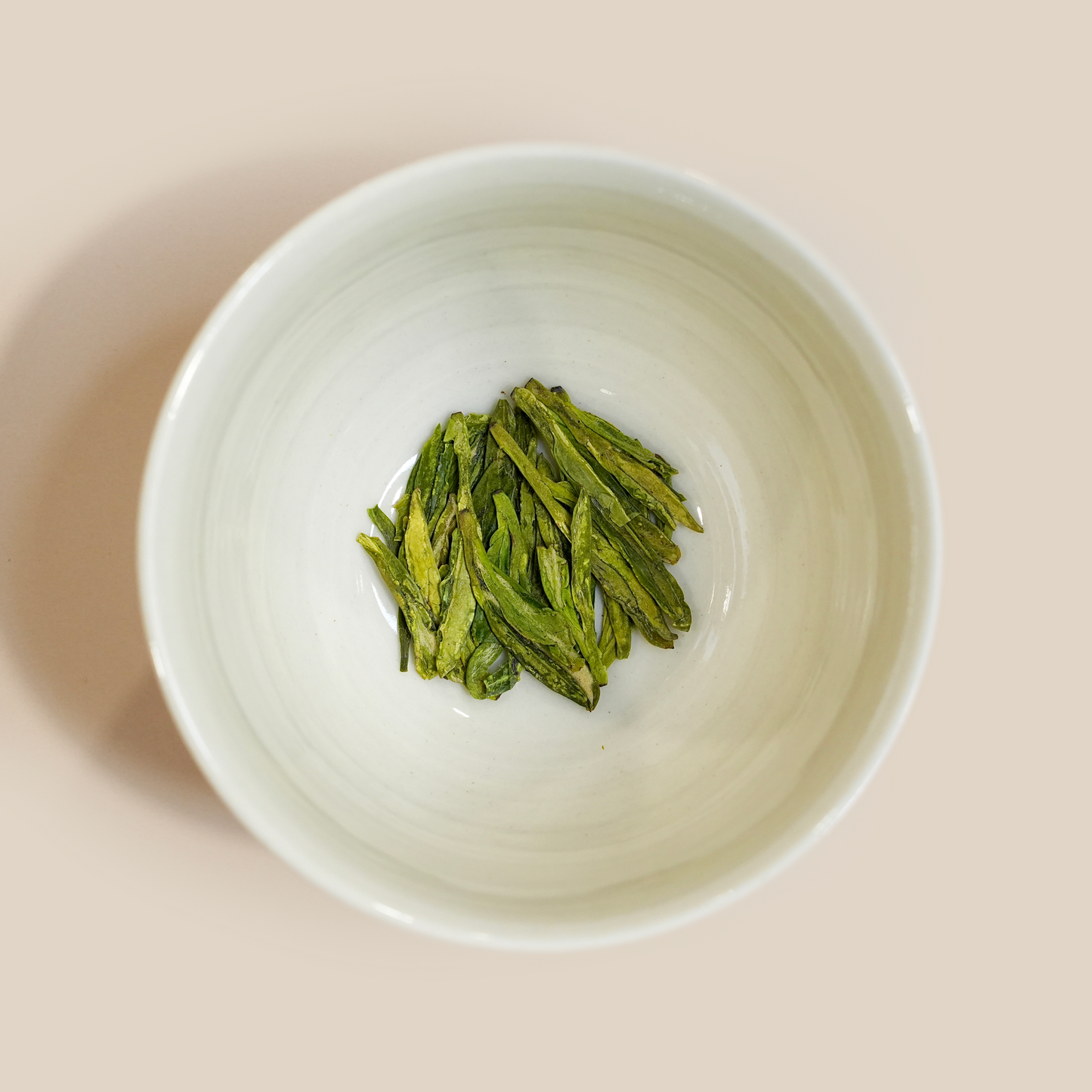
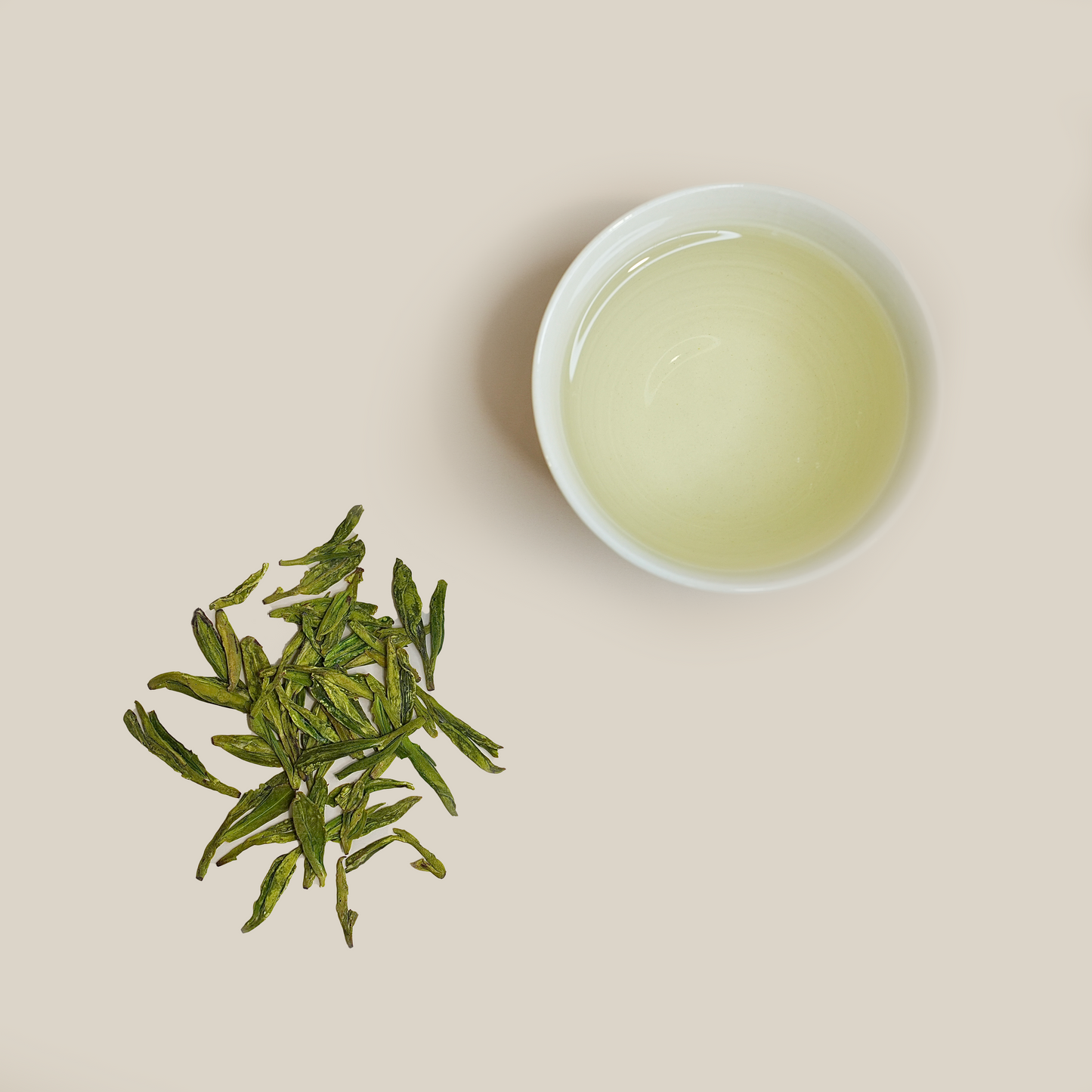

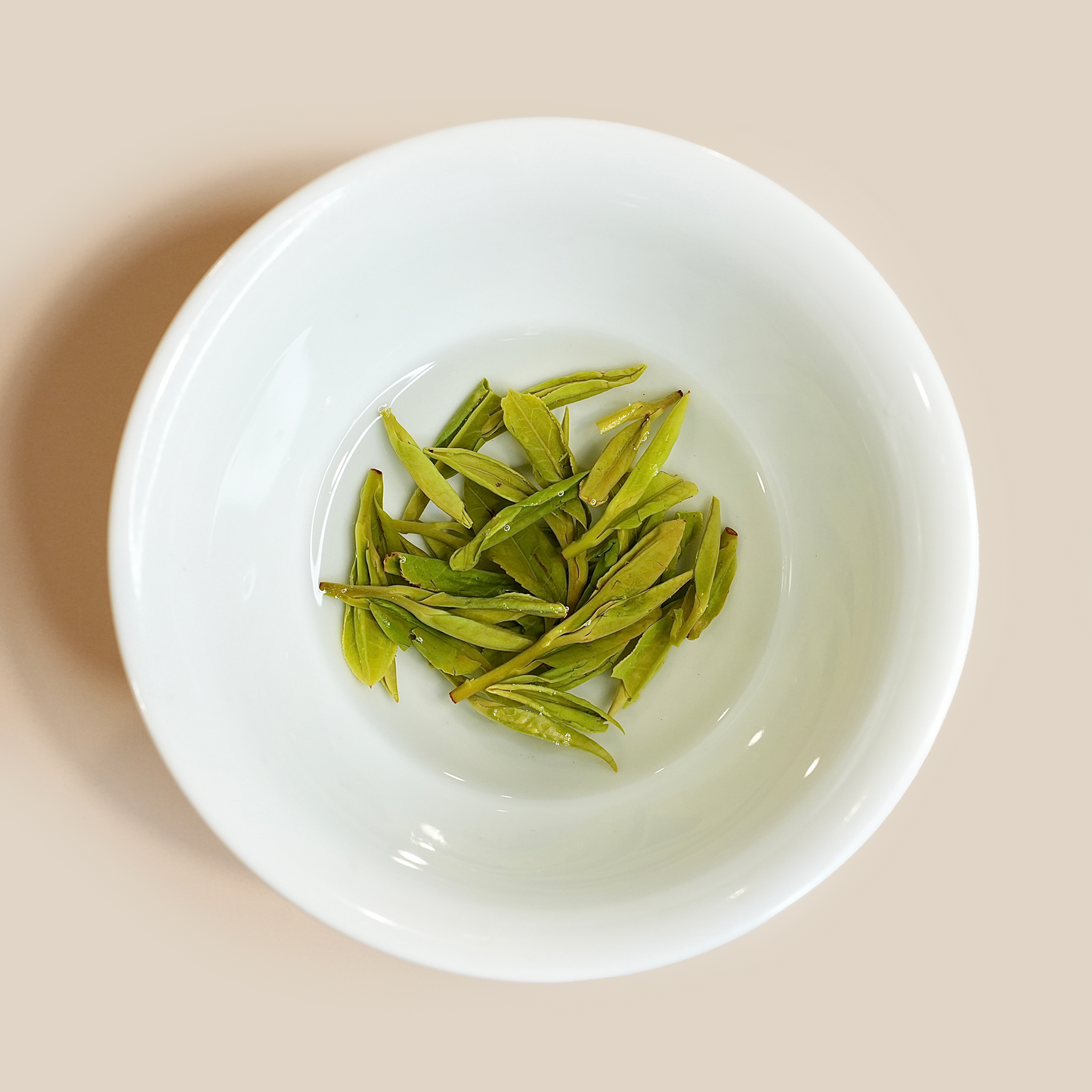
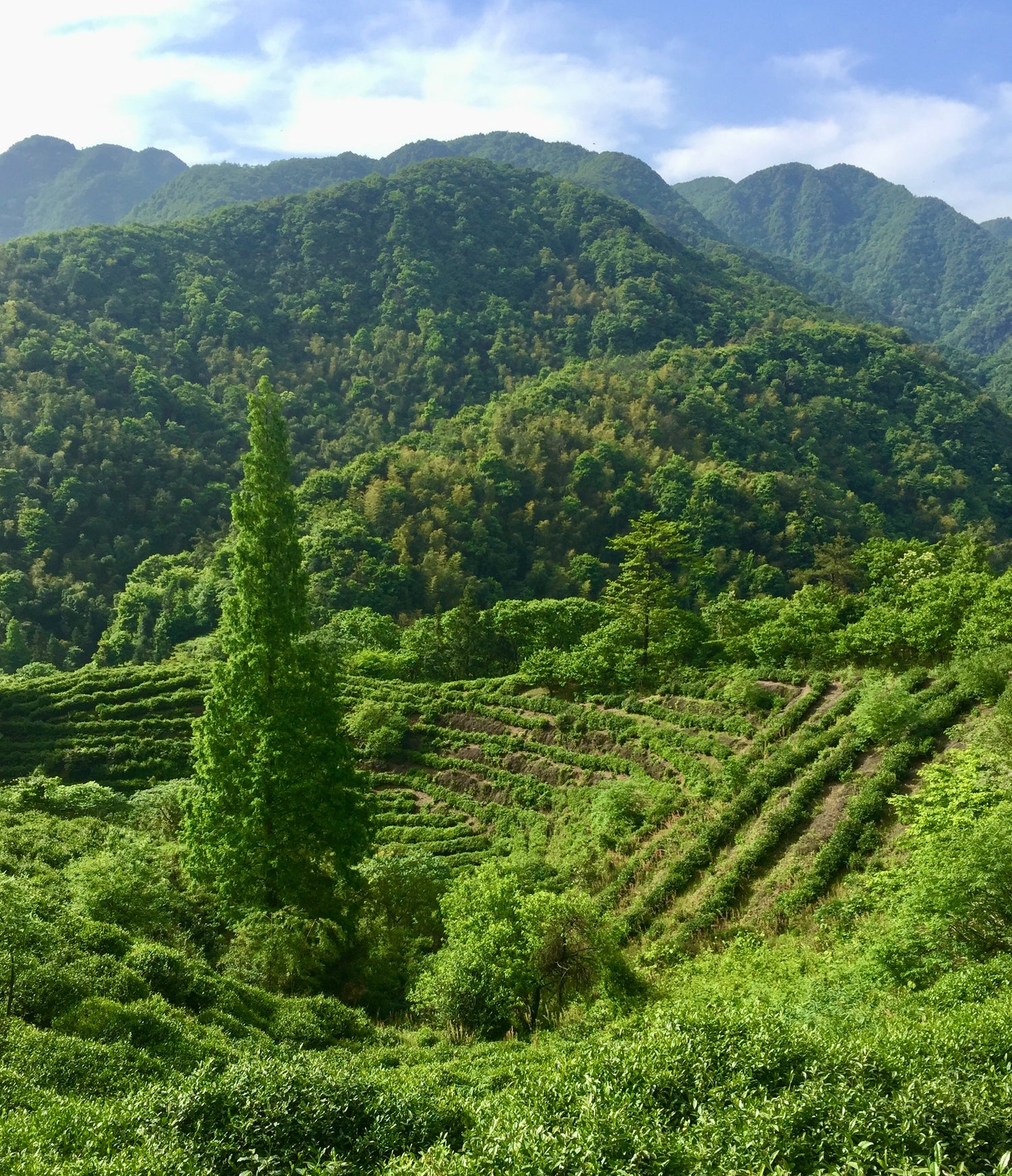
Tea Details
Harvest: Spring 2025 (Pre-Qingming)
Region: Chenxi Township, Shangyu District, Zhejiang
Elevation: ~500 m above sea level
Cultivar: Heirloom Qun Ti Zhong
Crafting Method:Semi-handcrafted
Storage Tips: Store in an airtight container away from heat and light; refrigeration is recommended
Shelf Life: 12 months at room temperature; 2–3 years refrigerated
Net Weight: 30g / 1.06oz

Where is it from?
This tea garden is located in Chenxi Township, Shangyu District, Shaoxing, Zhejiang.
At around 500 meters above sea level, it may seem modest — but in this hilly landscape, it’s already considered high terrain. Frequent mist, abundant rainfall, and wide day–night temperature swings nurture tea leaves rich in aroma and internal compounds.
We work with heirloom seed-grown tea bushes (quntizhong), many of which are over 50 years old. Their roots grow over 3 feet deep into mineral-rich soil, allowing the plants to draw natural nutrients and stay resilient through seasonal changes.
This garden has long been my father’s most trusted base — he knows its rhythm and temperament, and can craft entirely different teas from the same fresh leaves simply by adjusting the process.
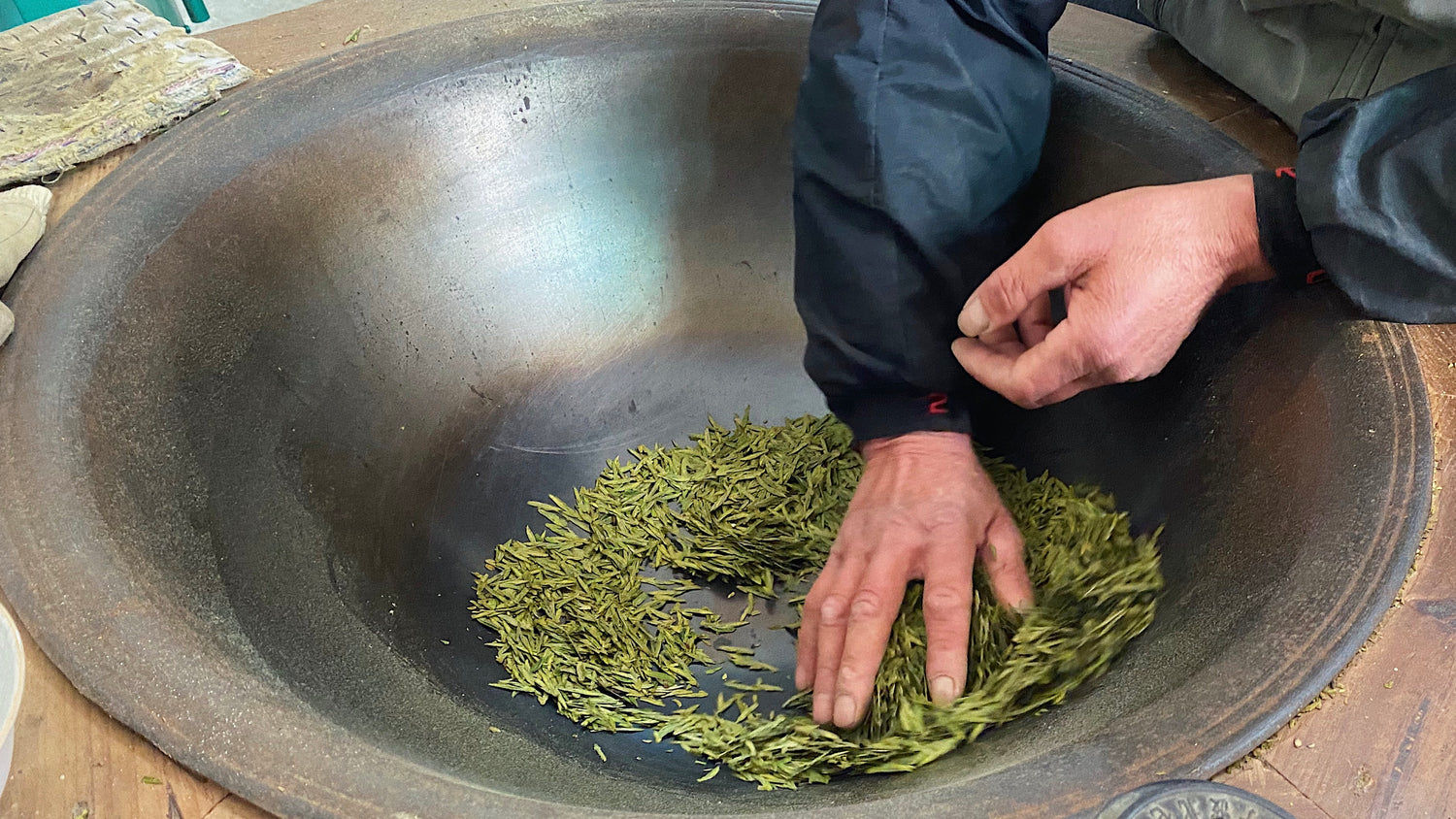
Hand-Fired to Perfection
Crafted through a semi-handcrafted process, our Dragon Well undergoes machine-assisted steps for consistency, followed by a crucial hand-fired finish. This final pan-firing stage requires skilled hands to adjust heat and movement in real time — gently pressing, tossing, and shaping the leaves to lock in their signature chestnut aroma and preserve the tenderness of early spring buds.
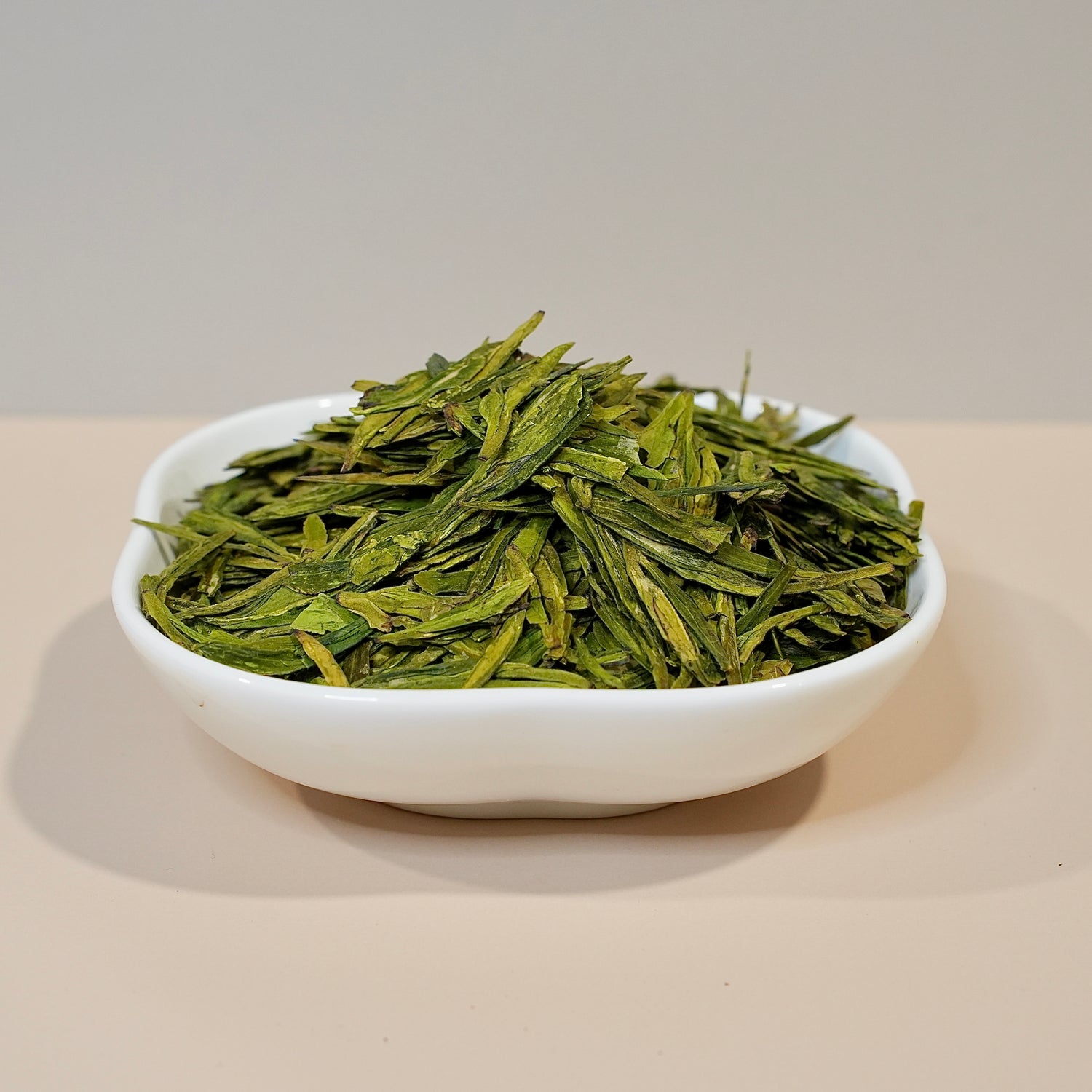
Why we don’t use Longjing #43
Most Longjing teas today are made with Longjing #43 — a clonal cultivar developed in the 1980s for early budding, high yield, and visual consistency. It produces neatly shaped, bright green leaves — but the flavor is often more uniform and mild.
Our quntizhong (群体种) bushes are genetically diverse. The dry leaves may look more rustic or varied (hua, 花), but the result is a more layered, expressive cup — with deeper aroma, natural variation, and a lasting finish.



The taste is refreshing and slightly sweet, with a gentle lingering finish and absolutely no bitterness. The tea leaves slowly unfurl in the cup, creating a visually pleasing experience. It’s perfect for afternoon tea or after meals, energizing but not overly stimulating. Highly recommended!




